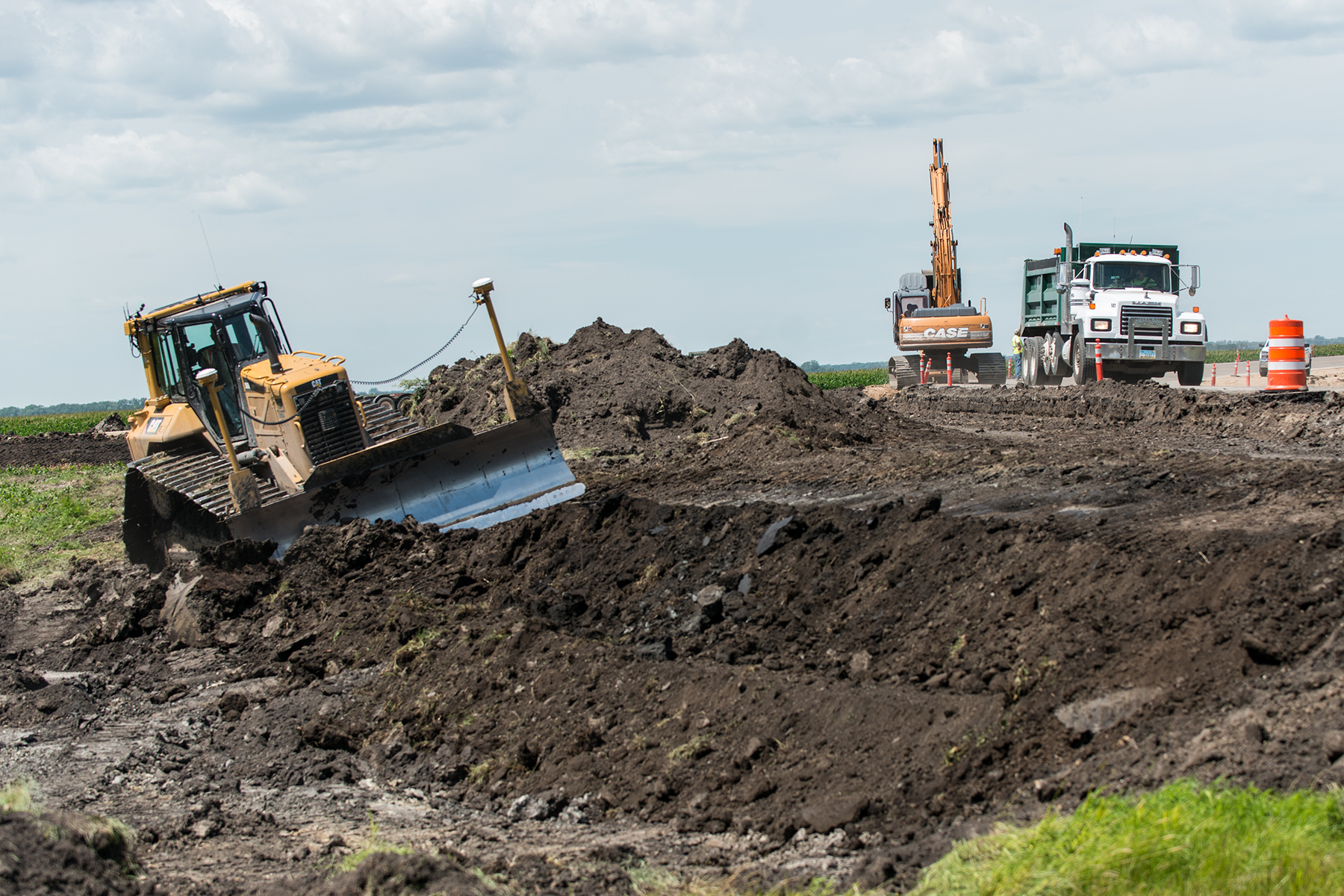Delve into the Cultural Resources Section's (CRS) purpose and how it serves as an asset to North Dakota Department of Transportation. Discover more related to the CRS through the resources below.
Cultural Resources Section Duties
The Cultural Resource Section (CRS) helps the NDDOT, as an applicant for federal funds and approvals, in compliance needed to address the National Historic Preservation Act process in consultation with the FHWA.
The CRS consults with SHPO and works with FHWA to consult with the regional THPOs/tribes. CRS completes identification efforts, reviews consultant reports on cultural resource surveys, works with others to assess effects, and follows through with any needed resolution of adverse effects. When appropriate, and we believe there is potential for exposure of previously unidentified significant resources or burials, we work to ensure monitoring of construction. If burials are exposed during construction of NDDOT projects we follow the ND State Burial Law or NAGPRA.
CRS also works on identification and avoidance of significant cultural resources on our material source locations, staging areas, and access roads related to this work.

NDDOT works closely with regional tribes to identify their concerns in regard to cultural resources of value to them. We have a Programmatic Agreement with the tribes that defines our consultation process that has been designed to foster relationships of trust and respect, and bring them into the NHPA Section 106 process as partners. Note that our identification and reporting requirements are in the Design Manual.
If you find cultural resources during a NDDOT project
For projects where we believe the potential for discoveries is likely, the Cultural Resource Section (CRS) puts a Discovery Plan in-place prior to construction. If you have a Discovery situation and a Discovery Plan is in-place, follow the procedures outlined in the plan. If you are unsure what to do, the following would always be appropriate:
- If you have a discovery situation:
- STOP - Protect the discovery and contact Cultural Resources Section at phone number or email address above.
- If you discover a burial:
- STOP - Protect the burial and contact Cultural Resources Section at phone number or email address above.
- NOTE: The ND State burial law has strict time and reporting requirements. It is imperative that your notification to the NDDOT CRS be prompt and that the burial is well protected.
Cultural Resources Links
Cultural Resource Management Laws and Regulations
Section 106 Review and Compliance
Section 106 of the National Historic Preservation Act requires that federal agencies take into account the effects of their activities on historic properties. Historic properties include sites, districts, objects, or structures that are eligible for listing in the National Register of Historic Places.
A NDDOT project requires a section 106 review if it has:
- Federal funding,
- Uses the FHWA NEPA Process with resulting approvals
- Takes place on federal or Indian/tribal land.
Cultural Resources Issues in the Design Manual: Chapter II
- Design Manual Chapter II: Environmental, Cultural Resources, and Public Involvement
- Cultural Resources section, including 106 process requirements, is on pages 121-143.
Programmatic Agreement for Tribal Consultation
This document is the result of discussions during consultation between the North Dakota Department of Transportation (NDDOT), the Federal Highway Administration (FHWA) and the Tribes identified within agreement.
Avoidance of Cultural Resource Sites (CRS)
- Check the plans for environmental commitments! If there are unevaluated or eligible sites on your project commitments may document the need to fence these resources during construction to ensure avoidance. Check with Cultural Resources Section to clarify if you have any questions regarding commitments.
- Material source avoidance measures shall be strictly enforced
- Standard Fending Procedures
- Steel fence posts
- Snow fence (unless otherwise documented through CRS contact)
- On Projects Districts should coordinate fencing with CRS
- On Material Sources Contractor and/or District should coordinate fencing with CRS
- CRS must be present during fencing activities
- Fencing will not be removed until all construction/extraction activities have been completed.
Contact Staff
- Phone: 701-328-4539 or 701-328-6985
- Email: Cultural Resources Section
